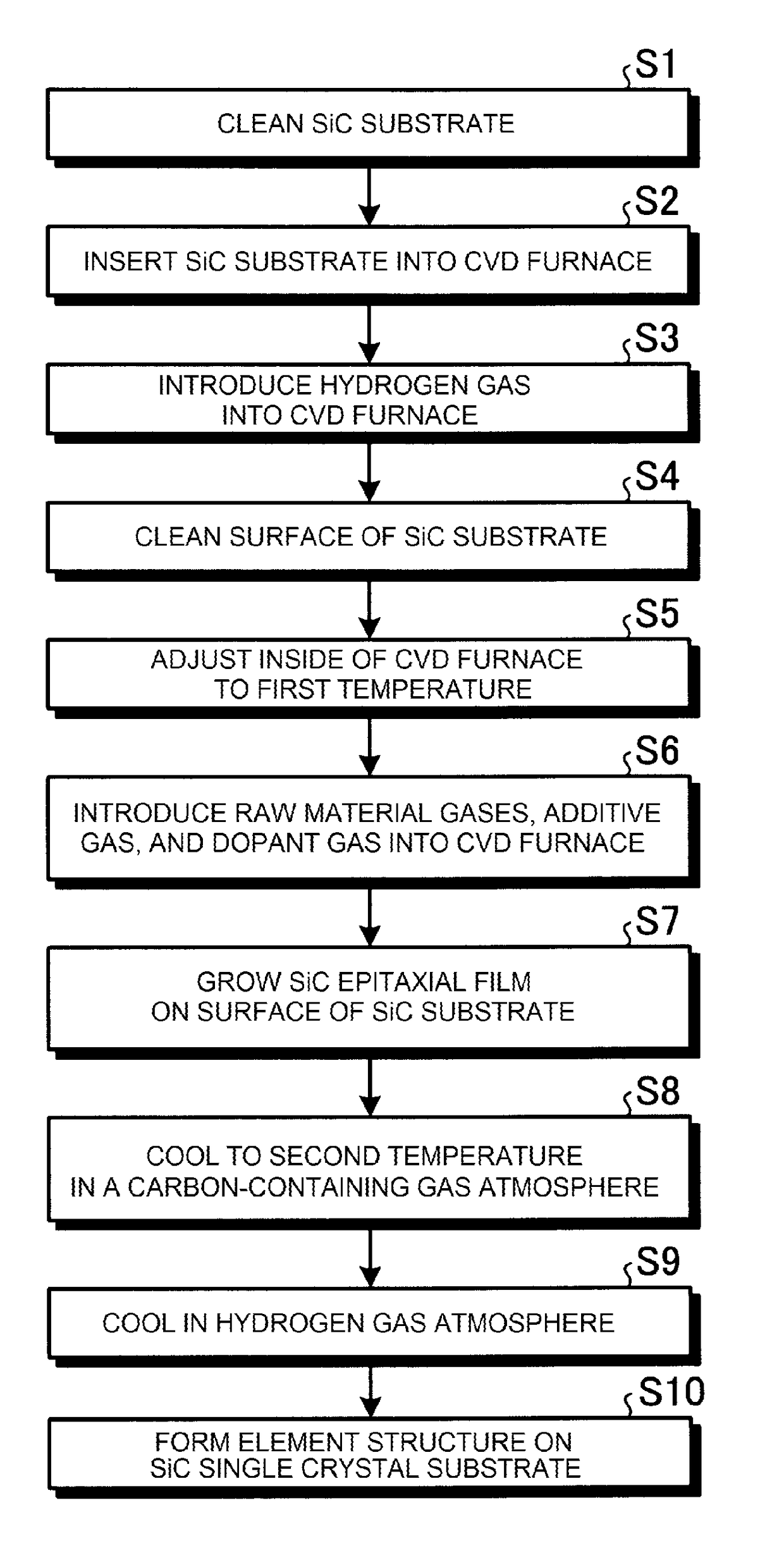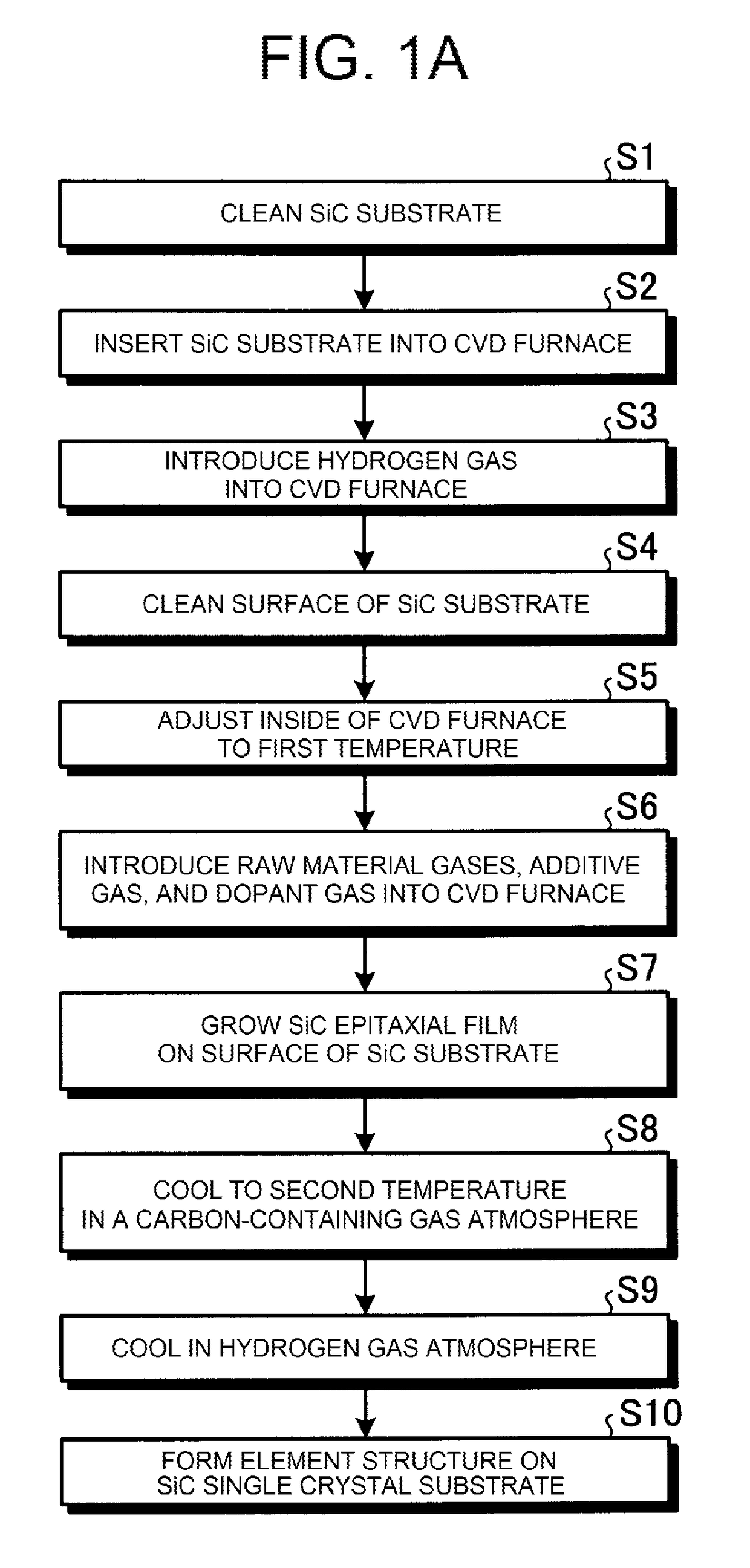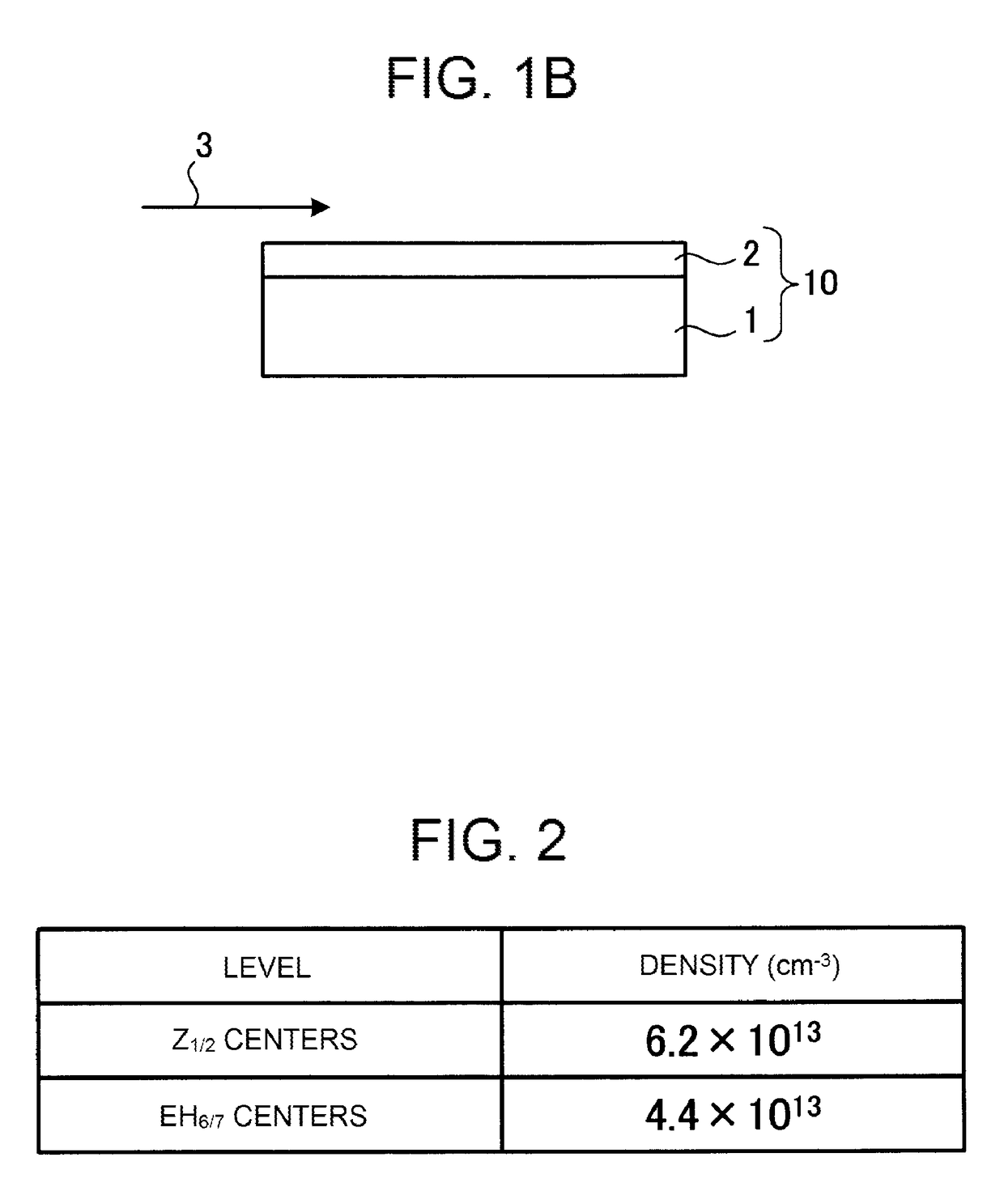Silicon carbide semiconductor device manufacturing method
a semiconductor device and silicon carbide technology, applied in the direction of crystal growth process, polycrystalline material growth, chemically reactive gas growth, etc., can solve the problems of large amount of time taken inability to grow an epitaxial at high speed, and inability to achieve high-speed epitaxial growth, etc., to achieve the effect of long carrier li
- Summary
- Abstract
- Description
- Claims
- Application Information
AI Technical Summary
Benefits of technology
Problems solved by technology
Method used
Image
Examples
embodiment 1
[0028]A description will be given of a silicon carbide semiconductor device manufacturing method according to Embodiment 1, with a case of fabricating (manufacturing) a semiconductor device using silicon carbide four layer repeat hexagonal crystals (4H—SiC) as a semiconductor material as an example. FIG. 1A is a flowchart showing an outline of the silicon carbide semiconductor device manufacturing method according to Embodiment 1. FIG. 1B is a sectional view showing a state partway through the manufacture of the silicon carbide semiconductor device according to Embodiment 1. Firstly, a substrate (4H—SiC substrate) 1 formed of 4H—SiC is prepared, and cleaned using a general organic cleaning method or RCA cleaning method (step S1). A main surface of the 4H—SiC substrate 1 may be, for example, a 4° off-oriented (0001) Si surface.
[0029]Next, the 4H—SiC substrate 1 is inserted into a reactor (a chamber, not shown) for growing a 4H—SiC single crystal film (hereafter referred to as a SiC e...
embodiment 2
[0047]Next, a description will be given of a silicon carbide semiconductor device manufacturing method according to Embodiment 2. The silicon carbide semiconductor device manufacturing method according to Embodiment 2 differs from the silicon carbide semiconductor device manufacturing method according to Embodiment 1 in the following three ways. The first difference is that the C / Si ratio of the raw material gases is taken to be 1.25. The second difference is that the first temperature for growing the SiC epitaxial film 2 is taken to be 1,640° C. The third difference is that a chlorine-containing gas (hereafter referred to as a second chlorine-containing gas) is further added in step 8.
[0048]Specifically, in step S5, the temperature inside the reactor is adjusted to 1,640° C. (the first temperature). In step S6, the raw material gases are introduced so that the C / Si ratio becomes 1.25. In step S7, the growth temperature of the SiC epitaxial film 2 is taken to be 1,640° C. In step S8...
PUM
| Property | Measurement | Unit |
|---|---|---|
| temperature | aaaaa | aaaaa |
| temperature | aaaaa | aaaaa |
| temperature | aaaaa | aaaaa |
Abstract
Description
Claims
Application Information
 Login to View More
Login to View More - R&D
- Intellectual Property
- Life Sciences
- Materials
- Tech Scout
- Unparalleled Data Quality
- Higher Quality Content
- 60% Fewer Hallucinations
Browse by: Latest US Patents, China's latest patents, Technical Efficacy Thesaurus, Application Domain, Technology Topic, Popular Technical Reports.
© 2025 PatSnap. All rights reserved.Legal|Privacy policy|Modern Slavery Act Transparency Statement|Sitemap|About US| Contact US: help@patsnap.com



